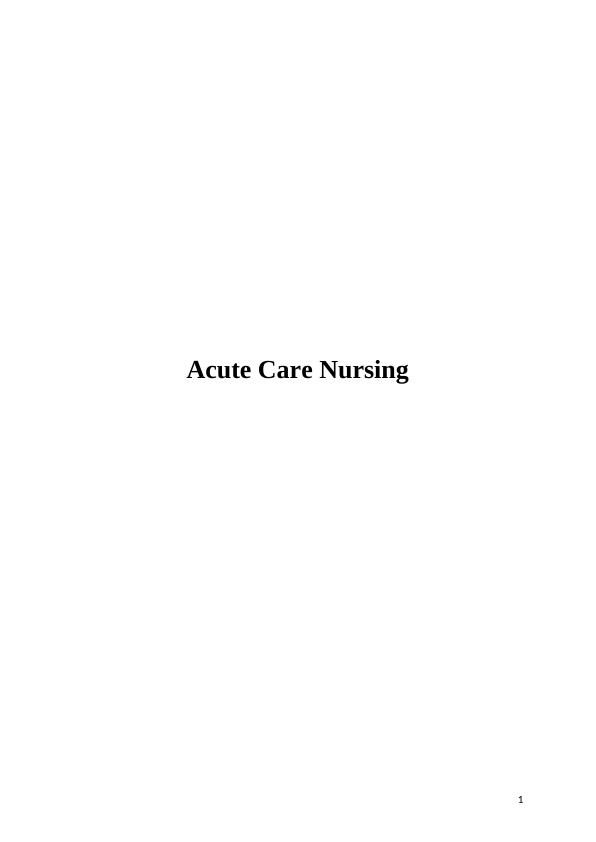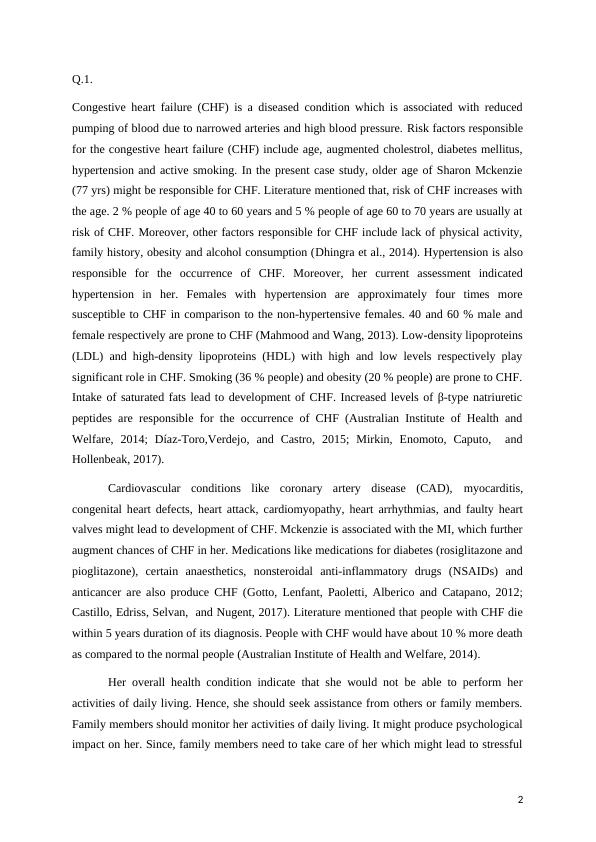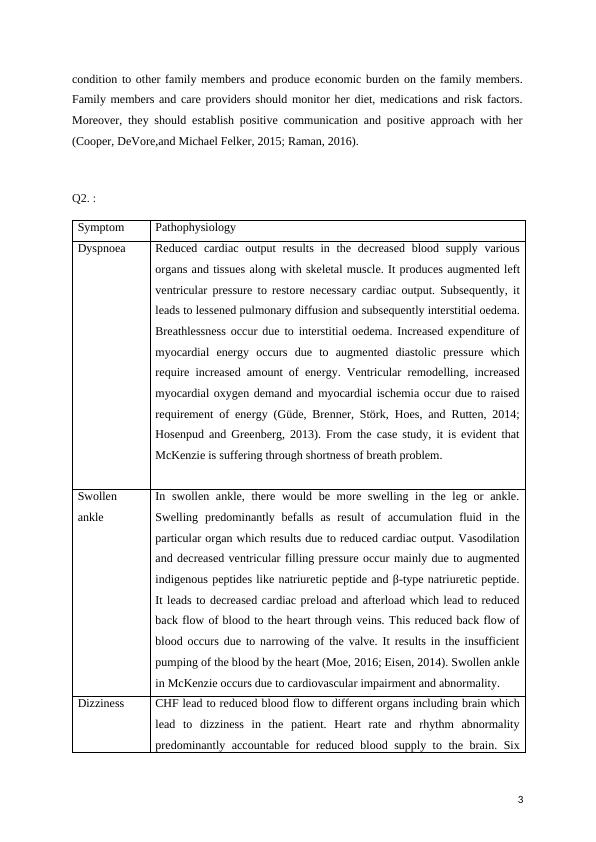Congestive Heart Failure: Risk Factors, Pathophysiology, Nursing Interventions and Drug Class
10 Pages2940 Words85 Views
Added on 2023-04-25
About This Document
This article discusses the risk factors, pathophysiology, nursing interventions and drug class for Congestive Heart Failure (CHF). It covers topics such as the causes of CHF, symptoms and their pathophysiology, drug classes like ACE inhibitors, and nursing interventions for patients with CHF. The article also includes references for further reading.
Congestive Heart Failure: Risk Factors, Pathophysiology, Nursing Interventions and Drug Class
Added on 2023-04-25
ShareRelated Documents
End of preview
Want to access all the pages? Upload your documents or become a member.
S00213148 Acute Care Nursing
|11
|3166
|20
Acute Care Nursing: CHF Risk Factors, Symptoms, Interventions
|9
|2010
|431
Congestive Heart Failure: Risk Factors, Symptoms, Treatment, and Nursing Interventions
|10
|2079
|308
Heart Failure - Case Study
|11
|2475
|41
Nursing Assignment: Case Study on Congestive Heart Failure
|11
|2140
|119
Congestive Heart Failure | Solved
|10
|2744
|22



